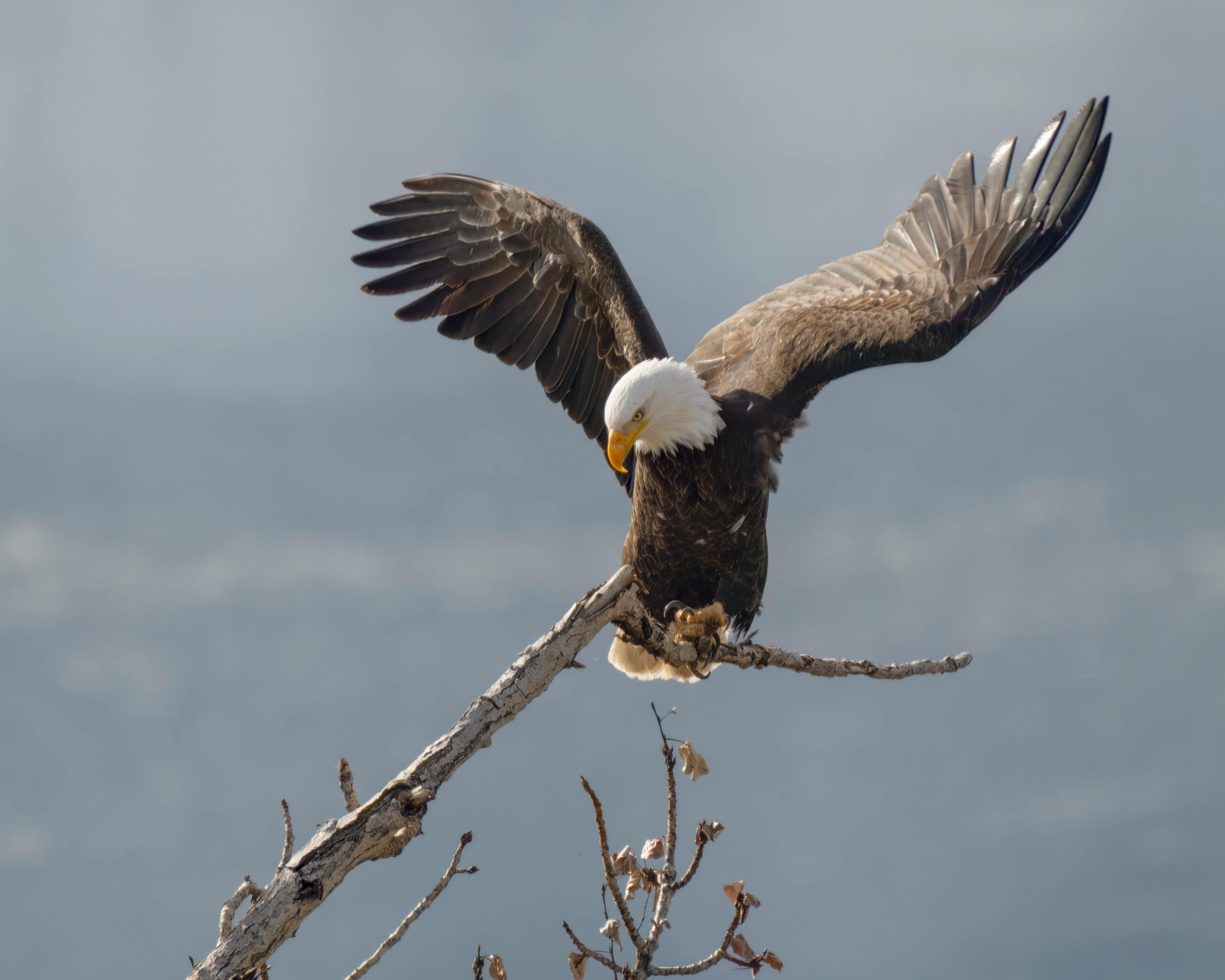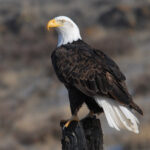Yes, there are bald eagles in the Adirondacks. According to the New York State Department of Environmental Conservation (DEC), there are currently 24 nesting pairs of bald eagles in the Adirondacks. This is a significant increase from the 1960s, when bald eagles had disappeared from the region due to habitat loss, pollution, and hunting.
The Comeback of Bald Eagles in the Adirondacks
Bald eagles are easily recognizable by their white heads and tails, and their large wingspan, which can reach up to 7 feet. However, it is important to note that immature bald eagles do not develop their distinctive white plumage until they are about five years old. Instead, they are chocolate brown, mottled with white.
The comeback of bald eagles in the Adirondacks is a remarkable conservation success story. In the 1960s, bald eagles were on the brink of extinction in the region due to a combination of factors, including:
- Habitat loss: Deforestation and development in the Adirondacks led to a decline in suitable nesting sites for bald eagles.
- Pollution: The use of pesticides, such as DDT, caused a thinning of bald eagle eggshells, leading to a decline in their population.
- Hunting: Bald eagles were hunted for their feathers and to protect livestock, further contributing to their decline.
Thanks to conservation efforts, including the banning of DDT, habitat restoration, and strict protection measures, bald eagles have made a remarkable comeback in the Adirondacks. The DEC has played a crucial role in monitoring and managing the bald eagle population in the region.
Bald Eagle Viewing Opportunities in the Adirondacks
 Image source: Pexels by Frank Cone
Image source: Pexels by Frank Cone
The Adirondacks offer excellent opportunities for birdwatchers and nature enthusiasts to observe bald eagles in their natural habitat. Some of the best spots to see bald eagles in the Adirondacks include:
- Newcomb: The Adirondack Interpretive Center in Newcomb is a popular destination for bald eagle viewing, especially during the winter months when the birds congregate near open water.
- Saranac Lake: The Saranac Lake region is home to several bald eagle nests, and visitors can often spot the birds soaring over the lakes and rivers.
- Lake Champlain: The shores of Lake Champlain, which borders the Adirondacks, are a prime location for bald eagle sightings, particularly during the spring and fall migrations.
To help protect bald eagles, the DEC recommends observing them from a safe distance and avoiding disturbing them, especially during the winter months when they conserve energy. It is also important to respect private property and avoid restricted areas.
Other Raptors in the Adirondacks
In addition to bald eagles, the Adirondacks are also home to other raptors, such as golden eagles, which can be seen migrating through the region in early spring and fall. However, golden eagles no longer nest in the Adirondacks, and have been extirpated as breeding birds from the Northeast.
Other raptors found in the Adirondacks include:
- Red-tailed hawks
- Cooper’s hawks
- Sharp-shinned hawks
- Osprey
- Peregrine falcons
These birds of prey play a vital role in the ecosystem, helping to maintain a balance in the region’s wildlife populations.
Protecting Bald Eagles in the Adirondacks
The DEC and other conservation organizations have implemented various measures to protect bald eagles in the Adirondacks, including:
- Habitat management: The DEC works to protect and restore bald eagle nesting sites and foraging areas, ensuring that the birds have access to the resources they need to thrive.
- Monitoring and research: The DEC and other organizations closely monitor the bald eagle population in the Adirondacks, collecting data on nesting success, population trends, and other important factors.
- Public education: The DEC and other organizations provide educational resources and outreach programs to help the public understand the importance of bald eagles and how to protect them.
By working together, the DEC, conservation organizations, and the public can ensure that bald eagles continue to thrive in the Adirondacks for generations to come.
Conclusion
The comeback of bald eagles in the Adirondacks is a remarkable conservation success story. Thanks to the efforts of the DEC and other organizations, the bald eagle population in the region has rebounded, and visitors to the Adirondacks can now enjoy the sight of these majestic birds soaring over the lakes and forests.
As we continue to protect and preserve the Adirondacks, it is important that we remain vigilant in our efforts to safeguard the bald eagle and other wildlife that call this region home. By working together, we can ensure that the Adirondacks remain a haven for these incredible birds and the many other species that call this unique ecosystem home.
Reference:
– New York State Department of Environmental Conservation: Bald Eagle Viewing
– Adirondack Wildlife Refuge: Bald Eagles
– The Adirondack Almanack: Bald Eagle – America’s Comeback Kid


